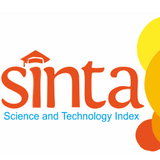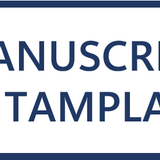Sifat Fisik Kimia Permen Jelly dari Gelatin Ikan Gabus dengan Penambahan Lendir Okra
DOI:
https://doi.org/10.31851/jipbp.v18i1.12052Keywords:
gelatin , ikan gabus, lendir okra, Permen jelly, Tulang ikanAbstract
Penggunaan gelatin dalam industri umumnya sebagai agen pembentuk gel, pengental, pengemulsi dan lain sebagainya. Namun, bahan baku gelatin yang banyak beredar dipasaran yaitu berbahan baku tulang sapi dan tulang babi. Pada peneltian ini, limbah ikan gabus berupa tulang sebagai bahan dalam pembuatan gelatin. Limbah tulang ikan gabus ini banyak tersedia di pasar sebagai limbah hasil olahan daging giling. Gelatin yang dihasilkan diaplikasi menjadi permen geli yang ditambahkan lendir okra untuk meningkatkan gizi permen sehingga manfaat lendir okra dapat dirasakan, mengingat pemanfaatan lendir okra sebagai bahan pangan belum maksimal dikarenakan selama ini masyarakat okra dengan menghilangkan lendirnya. Penelitian ini bertujuan untuk menentukan konsentrasi lendir okra terbaik terhadap sifat fisiko kimia dalam pengolahan permen jeli dari gelatin tulang ikan gabus. Perlakuan yang digunakan adalah lendir okra dengan konsentrasi meliputi 0; 2,5; 7,5 dan 10%. Sifat fisik dan kimia terbaik pada permen jeli yang ditambahkan beberapa konsentrasi lendir okra adalah perlakuan P2 (Penambahan 2,5% lendir okra) dengan nilai teksur 188,20 gf, karbohidrat 26,00%, kadar protein 8,48%, kadar abu 0,02%, kadar air 23,72%, kadar serat 1,73% dan gula reduksi 13,00 sehingga berdasarkan hasil tersebut disimpulkan bahwa perlakuan yang diberikan berpengaruh nyata terhadap parameter fisik (tekstur), parameter kimia meliputi kadar protein, kadar serat kasar dan gula reduksi. Perlakuan penambahan konsentrasi lendir okra tidak berpengaruh nyata Kadar karbohidrat, air, dan abu.
The use of gelatin in industry is generally as a gelling agent, thickener, emulsifier and so on. However, gelatin raw materials that are widely circulated in the market are made from beef bones and pork bones. In this research, snakehead fish waste is in the form of bone as an ingredient in the manufacture of gelatin. This snakehead fish bone waste is widely available in the market as a waste of processed ground meat. The resulting gelatin is applied to a gummy candy with okra slime added to increase the nutrition of the candy so that the benefits of okra slime can be felt, considering that the use of okra slime as food has not been maximized because so far the okra community has removed the mucus. This study aims to determine the best concentration of okra slime on physicochemical properties in the processing of jelly candy from snakehead fish bone gelatin. The treatment used was okra slime with concentrations covering 0; 2.5; 7.5 and 10%. The best physical and chemical properties of jelly candy with several concentrations of okra mucilage were P2 treatment (Addition of 2.5% okra slime) with a texture value of 188.20 gf, carbohydrates 26.00%, protein content 8.48%, ash content 0 0.02%, water content 23.72%, fiber content 1.73% and reducing sugar 13.00 so that based on these results it is concluded that the treatment given has a significant effect on physical parameters (texture), chemical parameters include protein content, crude fiber content and reducing sugar. The addition of okra mucilage concentration had no significant effect on carbohydrate, water, and ash levels.
References
Afriza, R. and Nilda, I. (2019) 'Analysis of Differences in Reducing Sugar Levels Using Lane Eynon and Luff Schoorl Methods in Red Dragon Fruit (Hylocereus Polyrhizus)', Jurnal Temapela, 2(2), pp. 90–96. doi:10.25077/temapela.2.2.90-96.2019.
Augustine, A.T. (2013) 'Fish Gelatin: Source, Chemical Composition and Potential Utilization', Fishery Products Technology Media, 1(2), pp. 44–46. doi:10.35800/mthp.1.2.2013.4167.
Alam, M.A. (2014) ‘Development of Fiber Enriched Herbal Biscuits: A Preliminary Study on Sensory Evaluation and chemical Composition’, International Journal of Nutrition and Food Sciences, 3(4), p.246.doi:10.11648/j.ijnfs.20140304.13.
Ariani, N.L.S.N., Miwada, I.N.S. and Lindawati, S.A. (2016) ‘Chemical Characteristics of Fermented Dairy Products “Kefir” Antioxidant During Storage’, e-journal of Tropical Animal Husbandry, 4(2), pp. 321–336. Availableat:http://ojs.unud.ac.id/index.php/tropica/article/view/27038.
Astuti, S., Ardiansyah, D. and Susilawati, S. (2021) 'Evaluation of Chemical and Sensory Properties of White Oyster Mushroom Jelly Candy at Various Gelatin Concentrations', Journal of Agroindustry, 11(1), pp. 43–53. doi:10.31186/j.agroindustri.11.1.4353.
Batista, A.P., Niccolai A., Bursic I., Sousa I., Raymundo A., Rodolfi L., Biondi N and Tredici MR. (2019) ‘Microalgae as functional ingredients in savory food products: Application to wheat crackers’, Foods, 8(12). doi:10.3390/foods8120611.
Badan Standardisasi Nasional. (2008). SNI 01-3547-2008 Syarat Nasional Indonesia Kembang Gula Jelly. BSN. Indonesia. 1- 42.
BPS Prov Sumatera Selatan. (2021). BPS Prov Sumatera Selatan (p. 1). https://sumsel.bps.go.id/indicator/56/437/1/produksi-perikanan-tangkap.html
Choi, S.S. and Regenstein, J.M. (2000) ‘Physicochemical and sensory characteristics of fish gelatin’, Journal of Food Science, 65(2), pp. 194–199. doi:10.1111/j.13652621.2000.tb15978.x.
Damayanti, D. (2007) Application of Gelatin from Catfish Bones in Making Jelly Candy. With, F.O. and Kind, B. (2019) 'Functional Okra-Ginger With Different Types Of Sweetness', (May).
Fitri, A.S. and Fitriana, Y.A.N. (2020) 'Analysis of Chemical Compounds on Carbohydrates', Sainteks, 17(1), p. 45. doi:10.30595/sainteks.v17i1.8536.
George w. & Latimer, J. (2016) Official Methods Of Analysis of AOAC International.
Goyal, K., Singh,N., Jindal S., Kaur, R., Goyal, A., and Awasthi,R. (2022) ‘Kjeldahl Method’, Advanced Techniques of Analytical Chemistry: Volume 1, (April), pp. 105112.doi:10.2174/978981505023312201011.
Hameed, A.M., Asiyanbi, T., Idris, N.,Fadzillah, N., Mirghani MES. (2018) ‘A review of gelatin source authentication methods’, Tropical Life Sciences Research, 29(2), pp. 213–227. doi:10.21315/tlsr2018.29.2.15.
Hardiyanti and Nisah, K. (2021) 'Analysis of Fiber Content in Meatballs with Gravimetric Method', Amina, 1(3), pp. 103–107.doi:10.22373/amine.v1i3.42.
Hasbullah, U.H.A. and Umiyati, R. (2017) 'Comparison of the Color of Suweg Flour in Instrumental and Sensory Phases of Dormant and Vegetative', AGRISAINTIFIKA: Journal of Agricultural Sciences, 1(1), p. 64. doi:10.32585/ags.v1i1.40.
Hayati, A. and Sugito (2006) 'Addition of Snakehead Fish Meat (Ophicepallus strianus BLKR) and Freezing Applications in Making Gluten Pempek', Indonesian Journal of Agricultural Sciences, 8(2), pp. 147–151.
Jaya, F. M., & Rochyani, N. (2020). Ekstraksi Gelatin Tulang Ikan Gabus (Channa Striata) Dengan Variasi Asam Yang Berbeda Pada Proses Demineralisasi. Jurnal Perikanan Dan Kelautan, 25(3), 201. Https://Doi.Org/10.31258/Jpk.25.3.201-207
Kimia, J., Kimia, J. and Malang, B. (2014) 'on Control Of Coconut Seed Quality Ellya Indahyanti, Budi Kamulyan, Bambang Ismuyanto', Scientific Research, 19(1), pp. 1–8.
Kementrian Kelautan Perikanan. (2020). Data Perikanan Budidaya Kota Palembang Tahun 2020. https://satudata.kkp.go.id/
Murtiningsih, Hp, S. And ., Mayagita (2018) 'Making Of Red Dragons Fruit Jelly Candy (Hylocereus Polyrhizus) Study Of Sucrose And Gelatin Concentrations', Journal Of Food Technology, 12(1), Pp. 67–77. Doi:10.33005/Jtp.V12i1.1103.
Mufida R.T, Darmanto YS, S.S. (2020) ‘Characteristics Of Jelly Candy With The Addition Of Different Fish Scale Gelatin’, 2(1), pp. 29–36.
Nurhidayah, Soekendarsi, E. and Erviani, A.E. (2019) 'Collagen Content of Milkfish (Chanos-chanos) and Nile (Oreochromis niloticus) Scales', Biology Makassar, 4(1), pp. 39–47.
Nurilmala, M., Indarwati, A.R. and Nugraha, R. (2022) ‘Detection of fish gelatin with DNA biomarkers’, IOP Conference Series: Earth and Environmental Science, 1033(1), p. 012046. doi:10.1088/1755-1315/1033/1/012046.
Oktaviani, I., Perdana, F. and Nasution, A.Y. (2017) 'comparative Properties Of Gelatin From The Skin Of Catin Fish (Pangasius Hypophthalmus) And Gelatin From Commercial Fish Skin', JOPS (Journal Of Pharmacy and Science), 1(1), pp. 1–8. doi:10.36341/jops.v1i1.368.
Pratiwi KI, Zaini AZ, N. (2012) 'Abelmoschus esculentus', Optimization of Bisukfit Salt Concentration on Quality Control of Coconut Juice, 2(2), pp. 160–167. doi:10.1007/978-94-007-2534-8_21.
Putra, M, R.A., Nopianti, R. and Herpandi (2015) 'Fortification of Cork Fish Bone Flour ( Channa striata ) in Crackers as a Source of Calcium The Fortification of Snakehead ( Channa striata ) Fish Bone Meals as a Source of Calcium on Crackers', Fishtech-Journal of Fishery Products Technology, 4(2), pp. 128–139.
Rismandari, M., Agustini, T.W. and Amalia, U. (2017) 'Characteristics of Jelly Candy With Addition of Carrageenan Iota from Seaweed (Characteristics of Jelly Candy With Addition of Carrageenan Iota from Seaweed)', Fisheries Saintek: Indonesian Journal of Fisheries Science and Technology, 12(2), p . 103. doi:10.14710/ijfst.12.2.103-108.
Rosmawati, Tawali, AB., Said, MI., Zzaman W., Kobun, R., Huda, N.(2021) ‘Characteristics of Gelatin From Skin and Bone of Snakehead (Channa Strata) Extracted With Different Temperature and Time’, Potravinarstvo Slovak Journal of Food Sciences, 15(July), pp. 648–661. doi:10.5219/1639.
SNI. (2008). Syarat Mutu Kembang Gula Lunak.Badan StandardisasiNasional.
Sundari, D., Almasyhuri, A. and Lamid, A. (2015) ‘Effect Of Cooking Process of Composition Nutritional Substances Some Food Ingredients Protein Source’, Media Penelitian dan Pengembangan Kesehatan, 25(4), pp. 235–242.
Suptijah, P., Suseno, S.H. and Anwar, C. (2013) ‘Gel Strength Analysis of Jelly Candy Produced from Shark Skin Gelatin with Addition of Carrageenan and Seaweed’, 16, pp. 183–191.
Syahraeni, Muhammad Anwar, H. (2017) Demineralization in Gelatin Obtained from Fish Bones, Analytical and Environmental Chemistry.
Yuliani, Marwati, Wardana H., Emmawati, A., Candra, KP.(2018) 'Characteristics of Fish Crackers With Bone Flour Substitution', Jphpi, 21(2), pp. 258–265.
Zaenab, S. (2017) 'Use of Various Infusion Doses of Okra (Abelmoschus esculentus) for Reducing Blood Sugar Levels in White Rats (Rattus norvegicus) Hyperglycemia', National Seminar and Product Title, (246), pp. 1229–1239.
Downloads
Published
How to Cite
Issue
Section
License
Copyright (c) 2023 Fitra Mulia Jaya, Lia Perwita Sari, Rih Laksmi Utpalasari

This work is licensed under a Creative Commons Attribution-NonCommercial-ShareAlike 4.0 International License.
Jurnal Ilmu-ilmu Perikanan dan Budidaya Perairan by http://www.univpgri-palembang.ac.id/e_jurnal/index.php/ikan is licensed under a Creative Commons Attribution-ShareAlike 4.0 International License.









